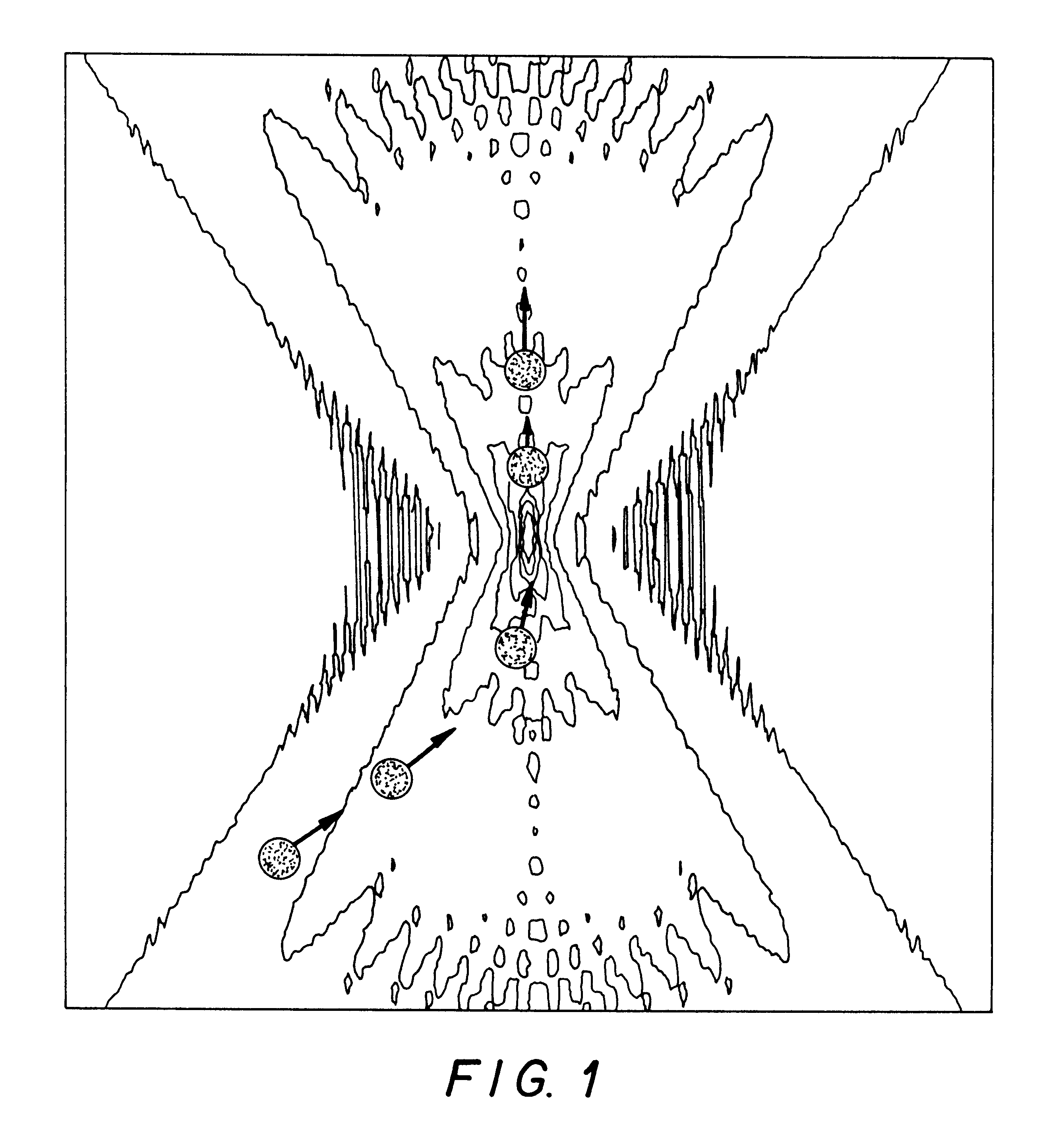Method and a device for monitoring nucleic acid amplification reactions
a nucleic acid amplification and monitoring device technology, applied in biochemistry equipment, photometry, biochemistry equipment and processes, etc., can solve the problems of complicated microfluidic system and inability to monitor nucleic acid amplification reactions on-lin
- Summary
- Abstract
- Description
- Claims
- Application Information
AI Technical Summary
Benefits of technology
Problems solved by technology
Method used
Image
Examples
example 1
In a PCR reaction the target amplification follows the formula
N=NO*(1+E).sup.x n (1)
Where N is the number of product sequences, NO the original amount of target sequences before amplification , E the efficiency of the amplification and n the number of amplification cycles. In a typical PCR situation an efficiency of better than 90% is expected. Also we have determined that under optimized homogeneous assay conditions the described method and device makes it possible to detect minimally 10 bound fluorescent molecules from a single microparticle. Further assuming that a reaction volume of 1 microliter is used it is possible to calculate the number of cycles necessary to amplify a single target sequence by PCR to a detectable level.
Assuming further that we have 5000 microparticles in the assay and that 50% of the produced sequences are bound we can calculate that the minimum number of molecules needed by the detection limit is
5000 part * 10 molec / part * 1 / 50%=100 000 molecules
From equa...
example 2
The following assay shows quantitative detection of microparticle bound short nucleic acid sequence by using a probe with fluorescent label.
Particles used in the assay were streptavidin coated spherical microparticles with 3.2 micrometer diameter available form Bans laboratories. A synthetic 20-mer oligonucleotide target with 5'-end biotin was purchased from KEBO Lab. The purpose of the biotin was to direct the oligonucleotide target on the surface of the microparticle through binding with streptavidin. An oligonucleotide analytical probe with 3'-end tetramethylrhodamine (TAMRA) was purchased from Amersham Pharmacia. The probe was a 13 nucleotides long sequence complementary to nucleotides 5-17 of the target sequence. The melting temperature of the probe was 33.1.degree. C. Said components of the assay were diluted in assay buffer containing 50 mM tris-HCl (pH 8.0 at 25.degree. C.), 0.5% bovine serum albumin, 0.5 M NaCl, 0.01% Tween 20, and 10 mM sodium azide.
A dilution series of bi...
PUM
| Property | Measurement | Unit |
|---|---|---|
| diameter | aaaaa | aaaaa |
| transit time | aaaaa | aaaaa |
| volume | aaaaa | aaaaa |
Abstract
Description
Claims
Application Information
 Login to View More
Login to View More - R&D
- Intellectual Property
- Life Sciences
- Materials
- Tech Scout
- Unparalleled Data Quality
- Higher Quality Content
- 60% Fewer Hallucinations
Browse by: Latest US Patents, China's latest patents, Technical Efficacy Thesaurus, Application Domain, Technology Topic, Popular Technical Reports.
© 2025 PatSnap. All rights reserved.Legal|Privacy policy|Modern Slavery Act Transparency Statement|Sitemap|About US| Contact US: help@patsnap.com



